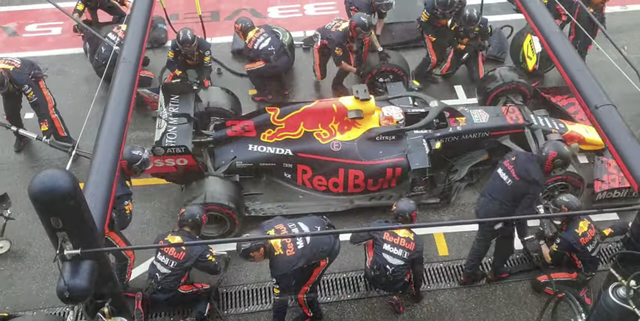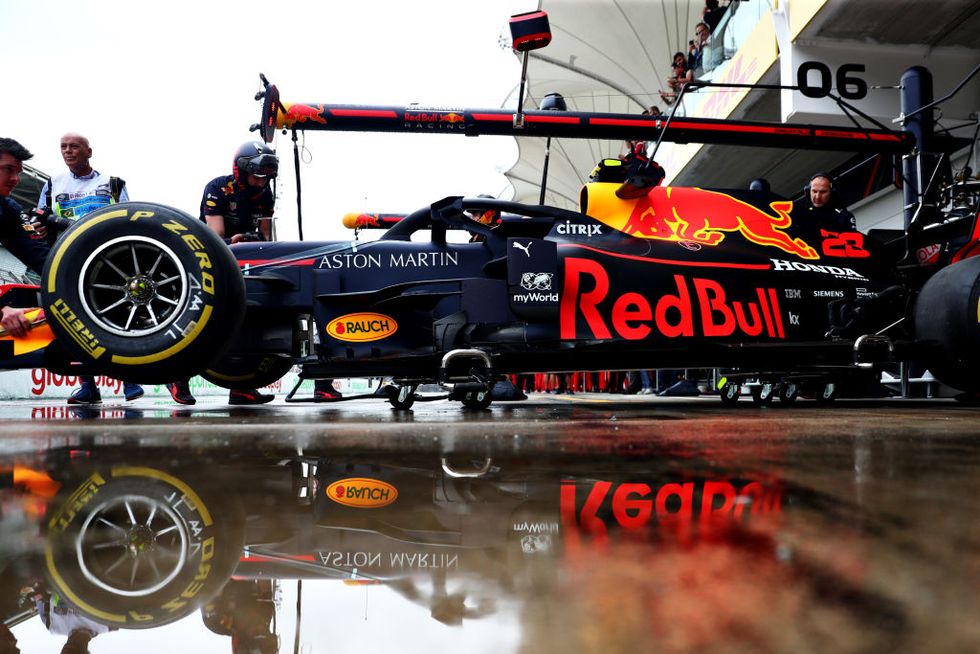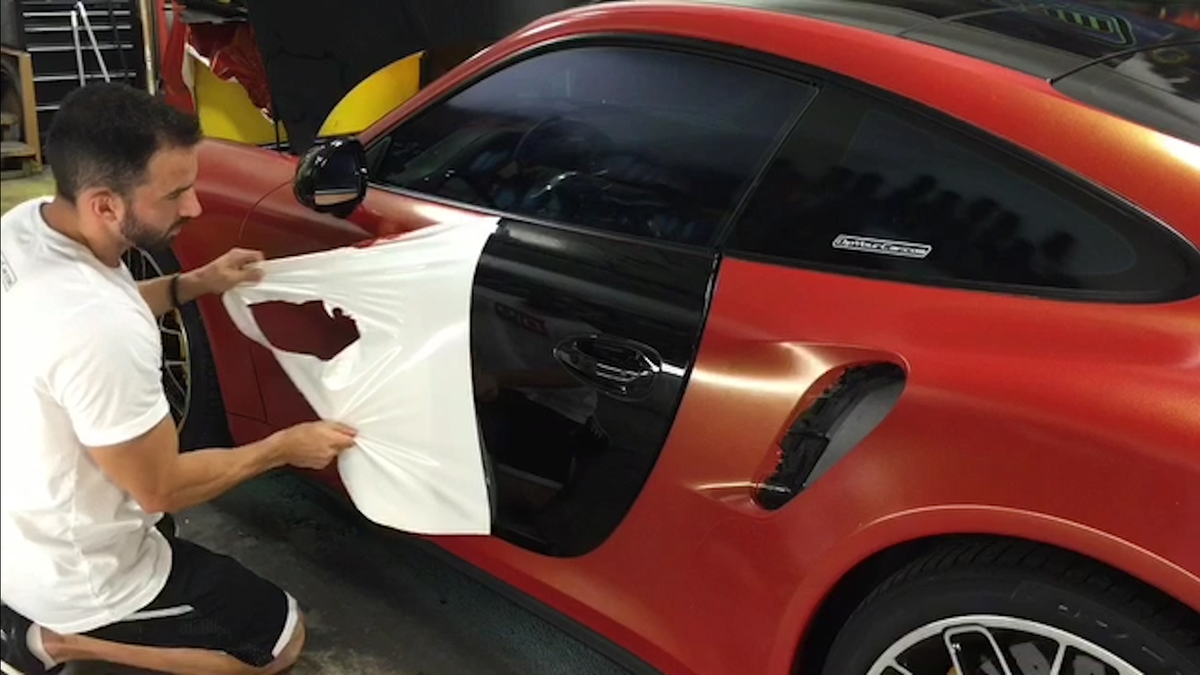- Aston Martin Red Bull Racing's pit crew set a new world speed record of 1.82 seconds at the Brazilian Grand Prix this weekend.
- The video below shows the crew's almost unbelievable feat.
- An average pit stop takes about 2.4 seconds.
There's something in the water at Aston Martin Red Bull Racing. Or in the Red Bull. This past weekend at the 2019 Brazilian Grand Prix, the pit crew at Red Bull beat their previous world record pit-stop time of 1.88 seconds. Their new time, set on lap 21 of 71, clocked in at 1.82 seconds, when race winner Max Verstappen came in to swap his red-striped soft-compound tires for a fresh set of rubber.
In a sport that comes down to the thousandths of a second, quick pit stops are key in a driver's overall race strategy. A single extra second in the pit could mean the difference between staying in first place or dropping down to second.
In an era of super-quick pit stops, this could very well be the last world record that's set. For the 2021 season, the wheel and tire setup will be getting heavier as F1 rules increase the diameter of the wheels to 18 inches. Red Bull beat the time the crew set at the German Grand Prix earlier this season, and this latest record is Red Bull’s third record-setting performance dating back to the British Grand Prix, when they set their first world record time of 1.91 seconds. That’s three world records, all set in a single season. This Red Bull pit crew is just like the car they work on: fast, efficient, and a lot of fun to watch.
For reference, an average pit stop will take around 2.4 seconds. The reason that Formula 1 pit stops are so quick are a mix of human talent and superfast tools. Most pit stops only require the four tires to be changed; changes to the front wing are rare, and F1 cars have enough fuel to last the entire race.
Even though only the tires need to be changed, a team has a total of 16 people ready to service the car when it stops. Each has a role: there are eight tire carriers, four to take off the old tires and four to put on the new tires. Then there are front and rear jack men, two car stabilizers, and four tire swappers, who use pneumatic wheel guns to unscrew and screw on the wheels. These pneumatic wheel guns are powered by compressed air or nitrogen and operate just like the ones in an average garage, except they spin at 10,000 rpm.
Mihir Maddireddy fell in love with cars as early as 2003, when he was three years old, while watching Michael Schumacher race for Ferrari. This memory was so important to him that he decided to write his college essays about it. He also has an unconditional love for Corvettes, and his entrance to C/D was a complete fluke, because as a high-school senior he emailed his résumé and cover letter to editors@caranddriver.com, proving that dreams do come true.














